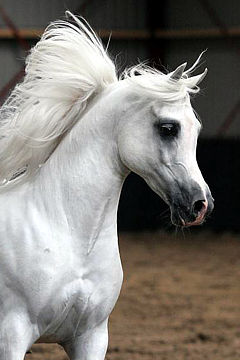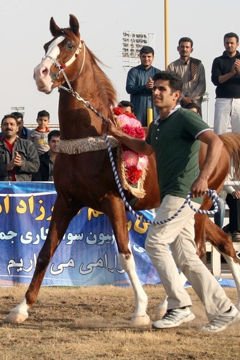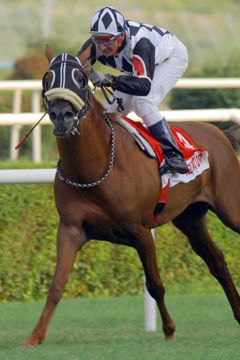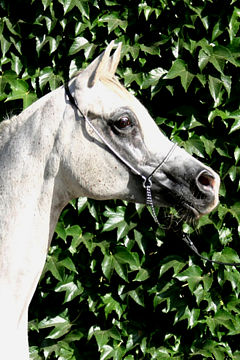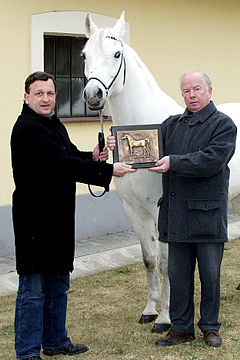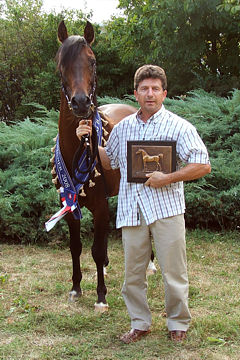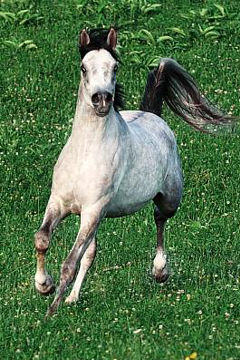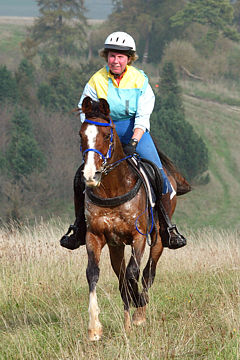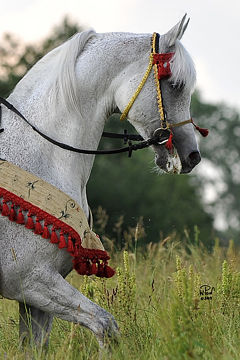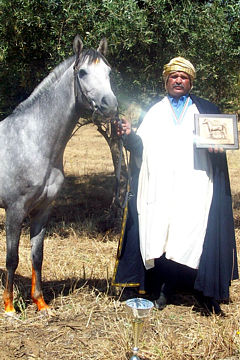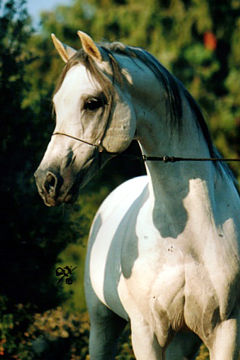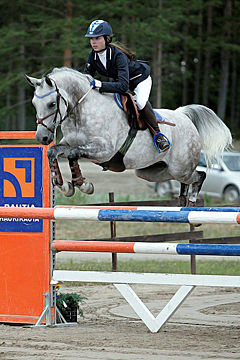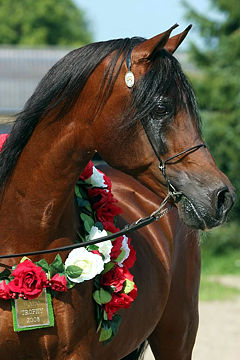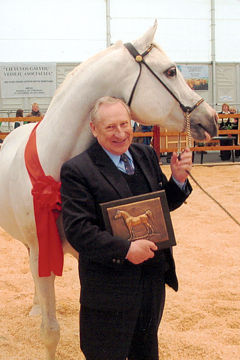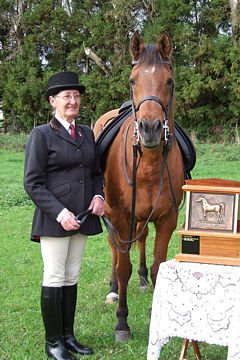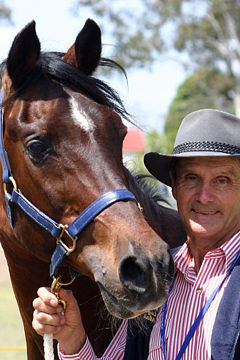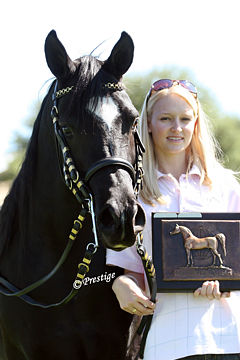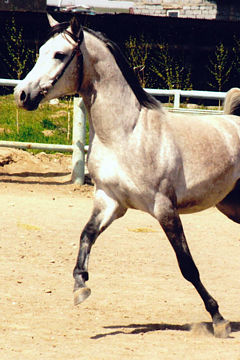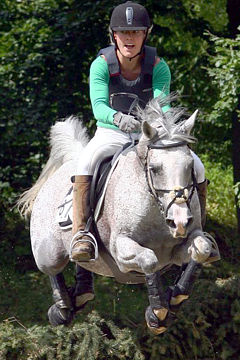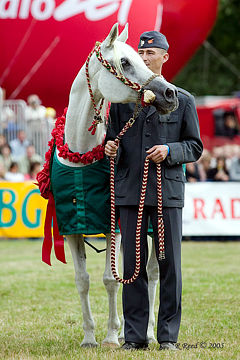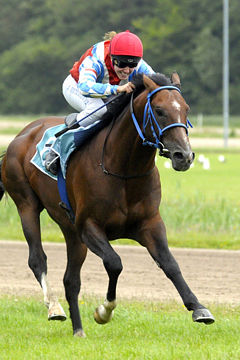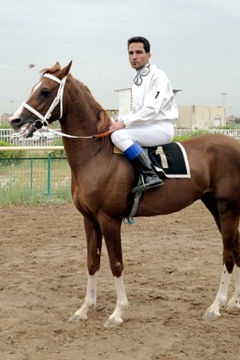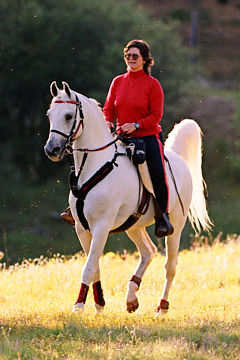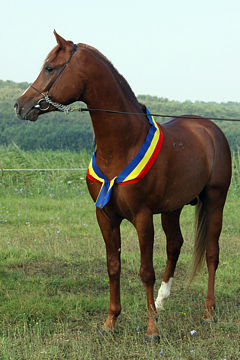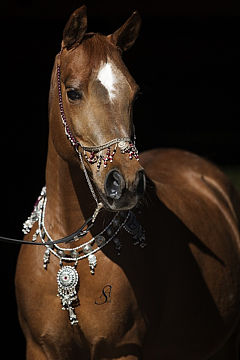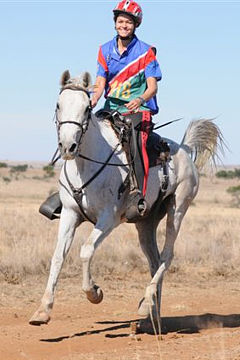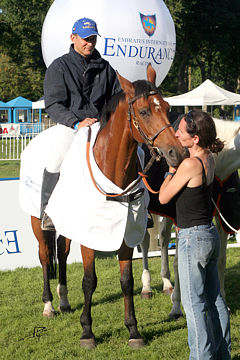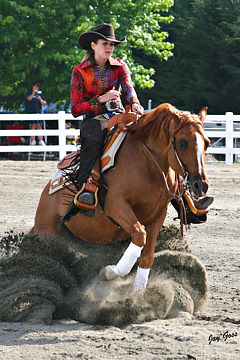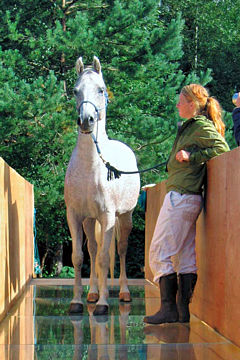WAHO Conference
 |
 |
 |
 |
MEDIA SITE TO ENJOY HUNDREDS OF WONDERFUL PHOTOGRAPHS
FROM THIS EXCEPTIONAL EVENT! www.al-tair-stud.de/waho.htm
The Sultanate of Oman was the first Middle Eastern country to become a full Registering Authority Member of the World Arabian Horse Organization and the strong commitment by the Royal Cavalry to WAHO since 1979 has never wavered. It was therefore especially appropriate that this highly successful Conference should have been held in this beautiful and historic nation on the 30th anniversary of their WAHO membership.
A WAHO Conference is a very special and unique meeting, it naturally includes the Organization’s business during the General Assembly sessions, but perhaps equally important are the social functions and tours. These have always been included ever since the first WAHO Conference in Seville, Spain, way back in 1972. They are designed so people from all over the world, who share their interest and love of Arabian horses, can meet and exchange ideas and knowledge to the benefit of all, and at the same time experience some of the history and culture of the host nation especially as it pertains to Arabian horses.
The WAHO Conference in Oman was no exception. From the Welcome Reception through to the glittering Gala Dinner, every social event was superbly arranged with the highest level of hospitality. There was delicious food, exceptional music and many good friends, both old and new, to chat to about our common international bond and favourite subject that brings us all together – the Arabian horse. And of course there was WAHO business to be discussed.
WAHO GENERAL ASSEMBLY 2009:
The General Assembly itself was opened by His Highness Sayyid Haytham Bin Tariq Al Said, Minister of Heritage and Culture. A further speech of welcome was made by H.E. Mr. Nasr bin Humood Al-Kindi, Head of Finance and Supply at Royal Court Affairs. A beautiful film “Fursan” specially produced by Mr. Isa Al Shabany for The Royal Cavalry and Royal Court Affairs was then shown, which clearly demonstrated the commitment both to young people and to Arabian horses which is flourishing in the Sultanate of Oman today. By encouraging children, both boys and girls, to learn to ride and by providing safe and well managed educational facilities where they can learn to care for horses correctly, the Royal Cavalry are building a solid foundation for the future of equestrianism in Oman.
There was an extremely high turn-out of participants from 52 countries at this Conference, with Registering Authority Member Delegates in attendance from 45 countries being Algeria; Argentina; Australia; Austria; Bahrain; Belgium; Belize; Bolivia; Bulgaria; Croatia; Czech Republic; Cuba; Denmark; Egypt; Finland; France; Germany; Iran; Iraq; Italy; Jordan; Kuwait; Lebanon; Libya; Lithuania; Morocco; Namibia; Netherlands; Oman; Poland; Qatar; Russia; Saudi Arabia; South Africa; Spain; Sweden; Switzerland; Syria; Tunisia; Turkey; United Arab Emirates; United Kingdom; United States of America; Uruguay; and The Republic of Yemen. And of course many Observers came from the above countries as well as from Panama; Botswana; Canada; Hungary; Ireland; Kenya; and Luxembourg.
During the Delegate Reports we heard much interesting information from around the world on Arabian horse numbers, breeding practices, and the most popular activities in different countries. Pleasure riding remains one of the most important activities for Arabian horses world-wide. Arabian racing is also extremely popular in many countries but especially in Turkey, Tunisia, Morocco, and the United Arab Emirates. The most frequently mentioned activity was endurance riding. It is also worth mentioning in particular that there was a spontaneous round of applause during Brother Peter McIntosh’s Delegate report for Australia when he mentioned that strong steps were being taken to stop the abuse of (halter) show horses in that country.
WAHO OFFICIAL BUSINESS:
All Agenda items which required a vote of the Delegates to the General Assembly were passed. The most important business items that took place during the WAHO General Assembly itself were:
- Acceptance by unanimous positive vote of the Delegates of the Executive Committee members of WAHO. The full list can be found here: http://www.waho.org/executive.html
- Acceptance by unanimous positive vote of the Delegates of The Republic of Yemen as a new Applying Registering Authority Member of WAHO.
- Acceptance by unanimous positive vote of the Delegates to allow Australia (AHSA) to register the Arabian horses in : Brunei, Indonesia, Malaysia, The Philippines, Singapore, Thailand, and Vietnam.
- The announcement of the results of the election of new WAHO Stud Book Advisory Sub-Committee by the Delegates to the World Registrars’ Meeting, they are: Mrs Krystyna Karaszewska (for Western Europe); Ms Helen Dohan (for Australasia); Assoc. Prof. Muzaffer Aydemir (for Eastern Europe/Rest of the World); Mr Abdul Aziz Jassim Al Boenain (for the Middle East); Dr. Khadija Driss (for North Africa); Mrs. Marie-Louise Van Wyk (for Southern Africa); Mrs. Deborah Fuentes (for North & Central America); Mr. Rodolfo Pinilla (for South America).
WAHO President Hans Nagel spoke of how glad he was that the United States of America, represented by the Purebred Arabian Trust and the Arabian Horse Association(formerly AHRA) is once again a full Member of WAHO. He also referred specifically to the importance of the increasingly popular sport of endurance riding for the Arabian breed, as it is the one arena in which they compete and regularly triumph against all other breeds on equal terms. WAHO has been supporting the World Young Horse Endurance Championships in Compiègne, France, for the past 3 years, and a very nice short film on the 2008 Championships was shown.
WAHO Secretary Federico Garcia Brum made a very interesting and well-received presentation on the history of WAHO, called “What is WAHO”. This slide-show, which is in English, can now easily be viewed at the following link: http:\\www.waho.org\images\Waho2009\WhatisWAHO.htm, just click on the ‘Slide Show’ button on the bottom right of the new window that appears. We hope to be able to have this available in other languages in the future.
Following the successful 2009 WAHO World Registrars’ Meeting, the Independent Chairman Mr. Kees Mol presented a detailed report about the proceedings of that very productive working meeting. Topics covered included passports, microchipping, Unique Equine Life Numbers, the continued need for printed stud books, and the correct use of WAHO documents such as Export Certificates and AI forms. Dr. Mohamed Machmoum from Morocco was Co-Chairman of this meeting.
The most exciting event took place at the very end of the General Assembly, when HE Mr. Nasr bin Humood Al-Kindi, Chairman of the Conference Organizing Committee and Head of Finance and Supply at Royal Court Affairs, together with Brigadier Abdulrazak Al Shahwarzi, Commander of the Royal Cavalry, made the surprise announcement of a hugely generous donation from His Majesty Sultan Qaboos bin Said. His Excellency presented the cheque there and then to Dr Hans Nagel, WAHO President, to warm applause.
THE NEXT WAHO CONFERENCE:
The venue for the next WAHO Conference was also announced. WAHO is delighted to inform you that this will be hosted in Doha, State of Qatar, and the date will be in November 2011. A very nice short film about Qatar’s attractions for Arabian horse enthusiasts was presented by Mr. Sami Jassim Al Boenain, General Manager of the Qatar Race and Equestrian Club, the generous hosts of the next WAHO Conference 2011.
GUEST SPEAKERS AND FILMS:
The participants also enjoyed a number of interesting and informative films and talks by Guest Speakers during the General Assembly sessions. This included a detailed scientific talk from Australian veterinarian and equine nutritionist, Dr. Ross Williamson, “Practical, Safe Nutritional programmes for the Arabian: realistic ways to reduce colic and laminitis; climate and nutrition interactions; the senior horse and metabolic disorders.”
The other Guest Speakers were Dr Hamood Al-Derghesy who talked about “The Intimate Relationship of the Arab people and the Arabian horse”; Mr. Hamad Salim Al-Belushi on “The History of the Arabian Horse in the Sultanate of Oman”; Mr. Salim Hamad Al Mahrooqy on “The Untold Story – History of horses in Arabia”; and the well known equestrian artist and painter, Mr. Ali Al Mi’Mar, who specializes in Arabian horse subjects, spoke about “The Arabian Horse in Art”.
Mr. Robert Fauls and Mr. Howard Pike from USA gave a short descriptive introductory talk about the new Arabian Horse Galleries being constructed by the Purebred Arabian Trust at Kentucky Horse Park’s International Museum of the Horse, United States of America. For more detailed information, please visit this website: http://www.purebredarabiantrust.com/Galleries_Info.asp
This was later complemented by the well-received illustrated presentation from Cynthia Culbertson, co-curator of the 2010 Exhibition entitled “A Gift from the Desert – the Art, History, and Culture of the Arabian Horse”. This incredible and unique exhibition is sponsored by the Saudi Arabian Equestrian Federation and will be opened to coincide with the 2010 World Equestrian Games to be held at the Kentucky Horse Park. This Exhibition is separate from the Arabian Horse Galleries project mentioned above, although it will be at the same Kentucky venue. Acclaimed documentary film maker Jo Franklin also spoke briefly about the film she is currently making on Arabian horses to accompany the Exhibition. More information can be found at this website:
http://www.imh.org/museum/sub.php?pageid=16
As a final treat to round off a wonderful WAHO General Assembly, the premiere showing of a specially commissioned film produced by Mr. Gerhard Skorianz from Austria, entitled “The Royal Cavalry in Oman’s New Dawn’, took place at the Gala Dinner.
PRE AND POST CONFERENCE TOURS, SOCIAL EVENTS AND ARABIAN HORSE EVENTS:
Before the General Assembly started, many lucky participants had already been able to enjoy some pre-Conference tours, visiting Muscat and Nizwa and having a very special day’s cruise on His Majesty’s Royal Ship, The Fulk Al Salamah.
Many guests also commented on the superb music they enjoyed at the various functions, in particular played by the Royal Oman Symphony Orchestra, the Senior Royal Band for Music and Folklore, and the Royal Oman Guard.
It is hard to single out any one special event from the many the participants were privileged to enjoy, but undoubtedly two of the highlights of their time in Oman were the unique Arabian Horse Festival with 5 Arabian Races at Madinat Al-Adiyat (the Royal Cavalry headquarters) and the Al-Ardhah Horse Show at Wadi Al-Aybadh. The spectacular Rakd Al Ardah (traditional riding) displays and other events will never be forgotten by those who attended, showing as they did the exceptional athletic abilities, quality and good temperament of the Arabian horses of Oman and especially the outstanding skills and horsemanship of their riders, drivers, jockeys, handlers and caretakers. What was especially noticeable was the high number of young ladies who were riding at these events, not only in the parades and general equestrian displays such as playing horse-ball, and riding side-saddle, but also as jockeys in the ladies-only race, and they were also very expert trick riders.
ARABIAN HORSE SHOW AT MADINAT AL-ADIYAT.
The programme started with the combined Military March, a splendid sight with pennants flying and harness flashing in the sunlight. Incidentally the whole afternoon’s events were accompanied by superb music and songs, both traditional Omani and classical, played by The Royal Guard of Oman, under the Directorship of Brigadier Rames Al Oweirah, including the 2nd and 3rd Band Squadrons and the musicians of the Royal Cavalry and Royal Camels Band. Next came the ‘Hambal’ and ‘Al Khalkal’ Marches, then the first race, swiftly followed by a demonstration of Horse-Ball by young female riders. The second race quickly followed, then there were various horse displays, a large selection of horse-drawn carriages many carrying children waving gaily at the crowd, and then traditional Omani trick-riding accompanied by ‘Al Tohrib’ traditional singing.
 |
|
 |
 |
 |
 |
By tradition, only mares are used for this thrilling ‘Rakd al Ardhah’ display. All bred by the Royal Stud at Salalah, they had very international pedigrees as was fitting for a WAHO Conference audience. On this occasion they included three daughters of the imported Russian mare Ekstra (Esplendor/Kolomna), and two grey daughters of the Maxwell-bred 1973 British stallion Shaheen (The Shah/Selina) (known as Al Mirqab in Oman) out of the imported Norwegian mares Begonia (Gokart/Alka) and Parla (Partner/La-La). Also taking part were the splendid 21 year old Russian-bred matriarch Nenagliadnaia (Nimroz/Havana), and her 12-year old daughter Mahroosah by French-bred Tout An Khan (Dahman El Arami/Floralie), ridden by lady riders Zainab Bint Sulaiman Al Ruqaishi and Mayyasa Bint Saif Al Foori respectively. Two other lady riders also showed off their skills, Salwa Bint Mohammed Al Foori riding the 19-year old Russian-bred mare Vaga (Gusar/Viuga) and Hiba Bint Salim Al Rahbi, who is the first Omani woman to achieve the feat of standing on her horse at full gallop, was riding Al Maqsad, an 8 year old by Tout An Khan out of Tersk-bred Norma (Mukomol/Nizina).
 |
|
 |
 |
 |
 |
Next came the third race, then the ‘Al Himah’ traditional horse dancing, followed by two large carriages carrying the pipes and drums bands, playing some wonderful music as they came past the stands, then a Troika Display, after which individual examples of the various different horse breeds owned by the Royal Cavalry were paraded and also a selection of fascinating and varied saddles from all over the world were shown.


 |
 |
 |
 |
The grand finale was the quite extraordinary sight of the 23 beautiful greys harnessed together, the 2 whips and several grooms standing on the carriage all dressed in vivid yellow, trotting up the race track to the stirring music of Carmina Burana and halting in front of the enthralled audience. It takes enormous patience and skill to train that many horses to go in harness together and it was noticeable that the 3 leaders, apart from showing excellent Arabian type, were also very interested in watching the crowd watching them. Among the 23 horses were some aged 20, others much younger and they included bloodlines from literally all over the world. Among them was the 10-year old Wadhooh, a paternal half-brother to world champion SHF Pearlie Mae, being by SHF Southern Whizz and one of the first results of using imported frozen semen in Oman. How nice it was for the breeder of SHF Southern Whizz, American veterinarian Dr. Ed Davidson, attending his first WAHO meeting, to be able to instantly recognise the son of his much loved stallion from the group, and he took many photos as a very personal reminder of a very special day. WAHO Conferences really do bring home the fact that the Arabian horse world is not only a very international one, it is a very closely intertwined and friendly one as well.
 |
 |
THE RACES
Arabian Racing in Oman is very popular, the main racetrack is at the Royal Cavalry headquarters although there are others in the countryside as well. On the 3rd of February, as mentioned above, all visitors were treated to an afternoon of excellent racing at Madinat Al-Adiyat, interspersed with stunning and incredibly varied displays of horsemanship. The races were well filled, ranging from nine to twelve entries and the levels of quality were enough to make any other country envious. Many of the runners we saw were owned by the Royal Cavalry, however, there were a fair number from private owners and they enjoyed a good deal of success. The weather was glorious, everyone was given a bi-lingual program, all that was needed was to sit back, enjoy the sunshine and watch the spectacle unfold.
 Al Hasim winning from Atheer and Sabaq. |
 Al Hasim winning from Atheer. |
Unusually in the Middle East, Oman sets aside some races specifically for lady jockeys, which is an amazing initiative for a Middle Eastern country. All the girls have learned to ride and are trained at the Royal Cavalry. The first race on the card was one of these, the Zeenat Al Adiyat race over 1,100 metres. The winner was Al Hasim (Simoun Ben Zid/Rakha) a 6-year old stallion, 2nd generation bred in Oman and of French and Tunisian bloodlines, the winning jockey was Aziza Bint Hamood Al-Bahlani. Atheer (Saut Du Loup/Mika), a 7-year old stallion of French and Russian lines finished in second place ridden by Fatima Bint Rashid Al-Manji, and Hiba Bint Salim Al-Rahbi riding the 9-year old stallion Sabaq (Atus De Domenjoi/CA Bint Zalotnik) whose sire is from France and dam from Denmark but of mixed Spanish, Polish and Crabbet lines, took third. All three horses were bred in Oman, owned by the Royal Cavalry and trained by Julian Smart.
A nice touch was that several of the races on the day’s card were named for well-known Arabian horses in Oman.
Next came the Yaqoot Race over 1600 metres, for local bred horses only. Yaqoot was the local racing name for the imported French stallion, Nenuphar Al Maury, and it was fitting that his 6-year old son Wathiq (out of Tawam), took first place ably ridden by Hamad Bin Mubarak Al Wahaibi. Wathiq is 2nd generation Omani bred and of French, Egyptian and Tunisian bloodlines. Second place in a tight finish went to the gallant 5-year old Andaleeb (Newday/Gagarka) of French and Russian lines, ridden by Walid Bin Mohammed al Yahyai. Again, the first two were from the Royal Cavalry/Julian Smart owner-trainer combination.

Wathiq just takes first place from Andaleeb

Bade’e just holds on from the fast finishing Al Rasheeq and Mutafani.

An easy win in the 4th Race for Salia de Ducor

Al Muqbil (Nr 1) comes with a late run to win the 5th race by a head, from Mudalil (8) and Bin Masandam (4).
That evening there was a magical Oman Folklore Show concert with traditional singing and dancing in the unique amphitheatre setting of the historic restored Al-Felaij Fort. The stage with its steep seating on three sides was open to the stars and the colourful costumes and beautiful music were spellbinding. The musicians and singers from the First Royal Band for Music and Folklore were superb. This Band, comprising 350 musicians, folk dancers and singers, was established by Royal Directive in 1976 to keep alive the original music, folklore and dance of the Sultanate. Not only do they perform both at home and abroad, they also have a role in teaching the next generation of Omanis about this important side of their culture. The Folklore Band included bagpipers and skilled drummers who both danced and played at the same time. Their story-telling dances were energetic and beautiful. Several of the songs or stories were about horses, some were songs of welcome or to celebrate a wedding, others were about the sea and included one musician conjuring a wonderful sound from a large sea-shell. Everyone was disappointed when the performance came to an end, even though yet another delicious dinner was to follow.
 |
 |
 |
 |
 |
 |
After the Conference
The day after the main General Assembly was over, the participants enjoyed a spectacular additional day’s activities, spending the morning visiting Nakhal Fort where more horses and some camels were on parade, and where many age-old local handicrafts were on show together with the skilled artisans who make them. After lunch at a peaceful beach-side resort, we all then drove into the desert outside Muscat for an amazing show by the private owners and breeders at a specially prepared site at Wadi Al-Aybadh. This show included once again the traditional Omani trick-riding, much of which seems to involve standing upright on the saddle while proceeding at full gallop. Another popular trick is for two people to gallop along side by side and arm-in-arm, which is not nearly as easy as it sounds.
 |
 |
 |
The sight and sound of over 100 horses and riders, men and women, coming up the sandy parade ground through a swirl of dust in the late afternoon light, amid the sound of jingling harness accompanied by traditional music from the superb group of singers and dancers, was a quite extraordinary and never to be forgotten experience. Many of the horses wore the same beautiful locally made silver bridles and breastplates, as well as the short leather boots with little bells sewn on, that had been seen at the Royal Cavalry Festival, which together with the embroidered saddle cloths were much coveted by many of the people who saw them. After the show, the riders lined up in front of the audience, many of them joining in the singing, some standing on their horses and swaying or even dancing to the music. Cameras were clicking almost non-stop as people tried to record the wonderful images on offer. It is amazing to think that today, there are photographs from this unique event being shown to people all over the world, spreading the word about the high quality of Omani horsemanship. WAHO feels sure that all participants would also like to join in sending a special thank you to all the private owners and breeders who brought their horses to this wonderful afternoon. Afterwards, a superb dinner ‘under the stars’ was enjoyed by all at the nearby specially set-up tented site. This was a fitting end to a fabulous Conference week.

 |
 |
 |
Of course a great many of the horses seen earlier in the week during the horse shows and festivals were produced by this Royal Stud, where the emphasis is on breeding sound athletic Arabian horses with the temperament and ability to do whatever is asked of them. Broodmares and stallions were paraded, along with a number of horses shown under saddle. Youngsters and mares were also grazing in the paddocks. It was noticeable that the stallions in particular seem to carry on breeding into their old age in these peaceful surroundings, for example Donchak (Mastak/Pannochka) from Khrenovoe Stud in Russia, Tout An Khan (Dahman El Arami/Floralie) and Nenuphar Al Maury (Baroud III/Nevadour) both from France are now 24 and two other French stallions Barabas (Djouras Tu/Floralie) and Saut Du Loup (Manganate/Nivada) are now 23.
 |
 |
 |
The rest of the Post-Conference tours were mainly sightseeing, taking in much of Oman’s beautiful scenery both mountains and beaches and many historic sites, unique frankincense trees, a night in a desert camp with dune bashing, and even the chance to see rare sea turtles lay their eggs at night.
All in all, this was a most memorable and happy WAHO Conference for so many different reasons, one which will live on in the memories of those lucky enough to be there for many years to come.
If you have never experienced a WAHO Conference before, do come and join us next time in Qatar in November 2011 – as anyone who attended either Oman 2009, Syria 2007, Poland 2004, Turkey 2002, Australia 2000, Bahrain 1998, Abu Dhabi 1996, Morocco 1994, Egypt 1992, Scottsdale 1990 and so on to all the past amazing WAHO Conferences going right back to 1972 will testify, it is an experience not to be missed and we promise that you will thoroughly enjoy it!
_1985.jpg) |
_1986.jpg) |
- His Majesty Sultan Qaboos Bin Said
- His Highness Sayyid Haytham Bin Tariq Al Said, Minister of Heritage and Culture;
- Major General Sultan Bin Mohammed Al-Na’amani, Secretary General of Royal Court Affairs;
- H.E. Shaikh Nasser Bin Mohammed Al-Hashar, Advisor at Diwan of Royal Court;
- H.E. Sayyid Al-Mu’tassam Bin Homood Al-Bousaidi, State Minister and Governor of Muscat;
- H.E. Mr. Nasr Bin Humood Al Kindi, Head of Financial Affairs and Supplies at Royal Court Affairs and Chairman of the WAHO 2009 Conference Organizing Committee.
- Brigadier Abdulrazak Bin Abdulkader Al Shahwarzi, Commander, Royal Cavalry
- Mr. Faisal Bin Mahboob Al-Raisi, Director General of the Royal Cavalry;
- Mr. Salem Suleiman Al-Mahrooqy, Deputy Director General of the Royal Cavalry;
- Brigadier Rames Bin Jumaan Al Awairah, Director General of Music, Royal Guard of Oman
- Mr. Salem Bin Mohammed Al Mashaikhi, Director General of Expenditure, Royal Court Affairs
- Sheikh Ali Bin Mubarak Al Mokhaini, Director General of Camel Corps
- Ing. Abdullah S. Al-Rawahi, Director General of Transport, Royal Court Affairs
- Mr. Abdulrahman bin Abdullah Al-Rawahi, Director General of Supplies
- Ing. Habeeb bin Ismail Bin Suwaid, Deputy Head of Royal State Affairs, Royal Court Affairs
- Mr. Issa Bin Salem Al Rawari, Head of Information Technology, Royal Court Affairs
- Mr. Waleed Al Obaidani, Royal Court Affairs
- Captain Mohammed Al Shukhaily, Royal Court Affairs
- Mr. Khalid Al Saifi, Director of Horse Registration Office, Royal Cavalry
- Mr. Mohammed Shamis Al Hashmi, Head of Thoroughbred Horses Section, The Royal Cavalry
- Mr. Suleiman Ali Salem Al Hattali, Head of Arabian Stud Book Section, The Royal Cavalry
- Mr. Mohammed Bin Said Al Balushi, Head of Documentation & Statistics Section, The Royal Cavalry
- Mr. Saif Bin Mohammed Al Gafri, Head of Public Relations Section, The Royal Cavalry
- Mr. Malik Essan Nassib, Stud Manager, Royal Stud, Salalah.
- Mr. Sultan Bin Mohammed Al-Kindi, Senior Translator, The Royal Cavalry
- Mr. Ali Bin Salim Al Fahdi, Horse Records Department, The Royal Cavalry
- Mr. Masoud Bin Rashid Al Gharibi, Head of Veterinary Section, The Royal Cavalry
- Mr. Hassan Bin Mohammed Al Balushi, The Royal Cavalry
- Mr. Said Bin Zaher Al Qaidi, Horse Records Department, The Royal Cavalry
- Mr. Hamad Khalfan Al-Ghanami, Royal Court Affairs
- Mr. Saud Mubarak Al Salmi, Royal Court Affairs
- Mr. Majid Nasser Al-Wahaibi, Royal Court Affairs
- Mrs. Asma Al Hajri, Royal Court Affairs
- Mrs. Wafa Al Hanaidi, Royal Cavalry
WAHO would also like to thank the Guest Speakers and Film-makers:
- Dr. Ross Williamson, DVM, Australia
- Dr. Hamood Al-Derghesy, Oman
- Mr. Hamad Salim Rashid Al-Belushi, Oman
- Mr. Salim Hamad Al-Mahrooqi, Oman
- Mr. Ali Al Mi’mar, UAE
- Mr. Isa Al-Shabany, Oman
- Mr. Gerhard & Mrs. Astrid Skorianz, Austria
- Cynthia Culbertson and Jo Franklin, USA
We also extend a special thank you to our Moroccan colleague Dr. Mohamad Machmoum, and to our British colleague Mrs. Natalie Meredith, whose invaluable help both before and during the Conference was very much appreciated.
We also thank the staff of Seema Company, Safat Marketing, Bahwan Travel and the Shangri-La’s Barr Al Jissah Resort. There were so many people whose tireless efforts and outstanding commitment to ensuring every small detail was perfect made the Conference such a resounding success. We are sorry if we have not named everyone, but we sincerely thank you, one and all.
 |
 |
 |
 |

